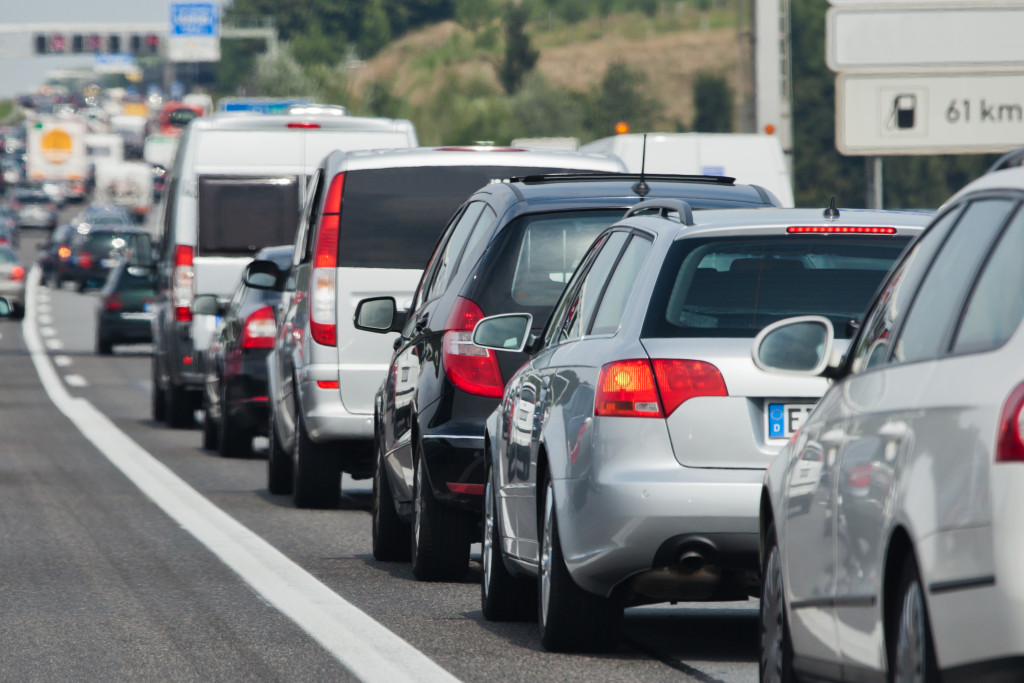The COVID-19 pandemic has undoubtedly altered the way we live, shop, and move. Many of us have become more mindful about consumerism, while others pay more attention to health and protection by exercising regularly and eating healthy home-cooked meals. But outside our homes, another significant change can shape not only the way we live and move today but also in the future: a world without traffic.
Around the world, the daily drive came to a grinding halt
At the height of the coronavirus pandemic, Bogota, Calgary, New York, and other major cities across the globe have blocked stretches of road in weeks. Only those with official business could go through many roads and streets. It’s a useful strategy to prevent overcrowding and enforce stay-at-home orders, which both could curb the spread of COVID-19.
In New York, the traffic levels plunged shortly after the city declared a local state of emergency. As schools and businesses shut their doors and public officials highly encouraged social distancing, there was no longer a need to drive from place to place. Alternatively, the city saw an increase in cycling.
The same thing happened in European cities. As people avoided roadblocks and crowded public transport, cycling emerged as an attractive alternative to urban mobility. In Bogota, the police brought out cones to add 72 miles of bike lanes. Berlin fast-tracked the creation of wider and extended bike lanes across the city.
Temporary bike lanes also popped up in the major thoroughfares in Budapest. The capital expressed making these road upgrades permanent, depending on how the situation goes.
Can we sustain a world without traffic?
Restricting access to playgrounds, dog parks, malls, and other places where people get together was a necessary response to the pandemic. But limiting the supply of open space doesn’t reduce demand. After all, people still need to go outside; some go to work while others go out to play to keep their sanity intact.
The demand for open space now comes from people on foot and bike, rather than in vehicles. This shift shows it’s possible to get away from the auto-centric culture that has dominated our urban lives for decades. Urbanists and public officials can put the importance back to the movement of people over cars.
Brussels, for instance, has put forward plans to prioritize pedestrians and cyclists. The plans include reducing vehicle speed limits to 20km/h to make the roads safer and inclusive for people on foot and bike. Milan, the once-epicenter of the coronavirus in Europe, had to cut public transport. But the city doesn’t want people to drive their private cars after the lockdown, either. Instead, it plans for sustainable mobility, including plans to enlarge sidewalks, create more bike lanes, and set vehicle speed limits to 30 km/h.

New perspectives that could spark a change
As the global economy reopens, people are going out again to work, travel, and make up for the time they have lost during the height of lockdowns and travel bans. But even if some plans to transform cities into bicycle-centric spaces aren’t transformed to reality yet, these newfound perspectives on mobility could spark small but impactful changes. Many people who began riding bikes during the pandemic will still be likely to cycle to work even if the COVID-19 crisis ends. That comes with a better outlook on sharing roads.
Driver education has been improved to ensure new drivers are aware of the value of sharing roads with bikers. Even those who have points in their driving record are encouraged to take a PIRP course online that doesn’t only reduce their points and lower their insurance rates but also offers tips for safer driving.
Newfound perspectives on traffic-related air pollution could spark a change in sustainability, too. Topics on sustainability have always been part of the conversation. But the reduced traffic-related air pollution during lockdowns accelerated the shift to sustainability. More people have become be mindful of their carbon footprint daily. Some didn’t only switch to biking but also started making eco-friendly choices, such as installing solar panels at home and steering clear from eating too much beef and single-use plastic.
The bottom line: A world with less traffic, better drivers, and good air quality is possible
Like other changes brought by the pandemic, it’s hard to predict whether these efforts and plans for sustainable mobility will last. But those responses should remind us that it’s possible to reduce congestion and deliver a greener transport system while bringing the economy and our daily lives back to full capacity. Through collective action, we can achieve a world with less traffic, better drivers, and good air quality.



